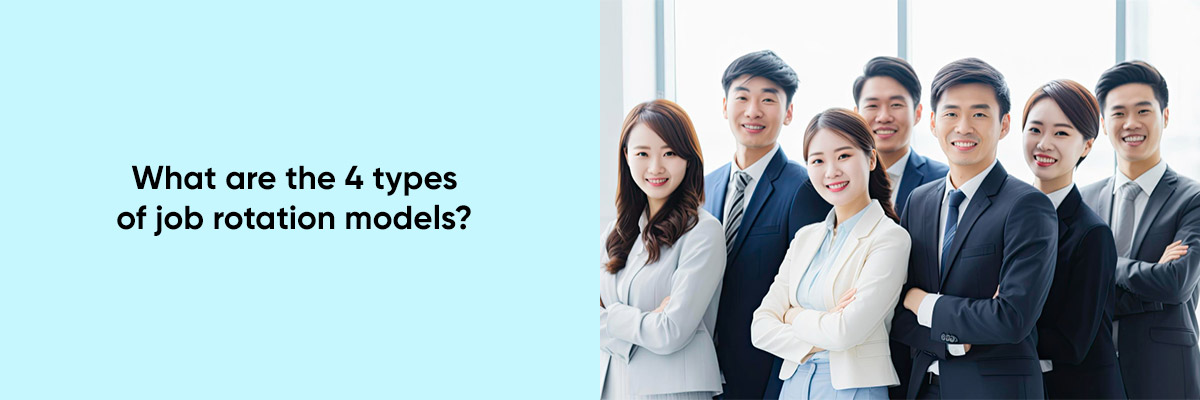In order to maximize workforce potential and promote employee progress, job rotation has become a strategic strategy that enables workers to broaden their skill sets, acquire a variety of experiences, and more effectively contribute to organizational objectives. This practice involves moving employees across different roles or departments within an organization.
The implementation of these rotational job models has several benefits for both employees and organizations. It fosters continuous learning, boosts employee engagement, reduces skill gaps, enhances retention, and cultivates a more agile and adaptable workforce.
To rotate jobs successfully, however, careful planning and clear communication are essential, as well as an organizational culture that supports the process. Companies should align job rotations with individual career goals, provide adequate training and support, and establish evaluation mechanisms to track progress and effectiveness.
4 types of job rotation models
Let’s understanding the various models of job rotation is pivotal for companies aiming to implement this strategy effectively. Let’s delve into the four primary types of job rotation models:
1. Horizontal Job Rotation:
Moving workers between various tasks or positions at the same hierarchical level within a company is known as horizontal job rotation. This model tries to keep complexity and responsibility levels constant while expanding an employee’s knowledge of different departments or functions.
For instance, a marketing specialist might rotate through roles in product development, market research, or customer relations. This approach helps individuals gain a holistic view of the organization and develop a diverse skill set, making them more adaptable and versatile.
2. Vertical Job Rotation:
Vertical job rotation, as opposed to horizontal job rotation, means placing employees into positions that are either higher or lower in the organizational structure. This model seeks to give people chances for leadership growth, career promotion, and a better comprehension of various managerial levels.
For example, a junior manager might rotate through various departments, experiencing roles from entry-level positions to higher managerial positions. This exposure helps employees understand the broader organizational structure, develop leadership skills, and prepare for future leadership roles.
3. Lateral Job Rotation:
The goal of lateral job rotation is to transfer workers within a hierarchical level across departments or functions. Lateral rotation promotes exposure to various departments within the company, in contrast to horizontal rotation, which could keep workers in a single department.
An employee in finance, for instance, might rotate through roles in operations, marketing, or human resources. This model fosters cross-functional collaboration, enhances problem-solving abilities, and encourages innovation by bringing fresh perspectives from different areas.
4. Cyclical Job Rotation:
A systematic and regular rotation of workers through a preset order of positions or departments is known as cyclical job rotation. Larger companies that have established programs in place to expose staff members to different areas of the company over a certain period of time frequently adopt this strategy.
Employees might follow a rotation schedule, spending a designated period in each department or role before moving to the next. This approach ensures comprehensive exposure to different functions, providing a well-rounded skill set and a deep understanding of the organization’s operations.
End Note:
So, job rotation models present a valuable opportunity for organizations to nurture talent, develop versatile employees, and create a dynamic work environment. By embracing these models strategically, businesses can build a workforce capable of thriving in today’s rapidly changing business landscape.
For those looking to deepen their understanding and stay updated on the latest trends, don’t miss out on our series of engaging payroll webinars designed to educate and inspire.





